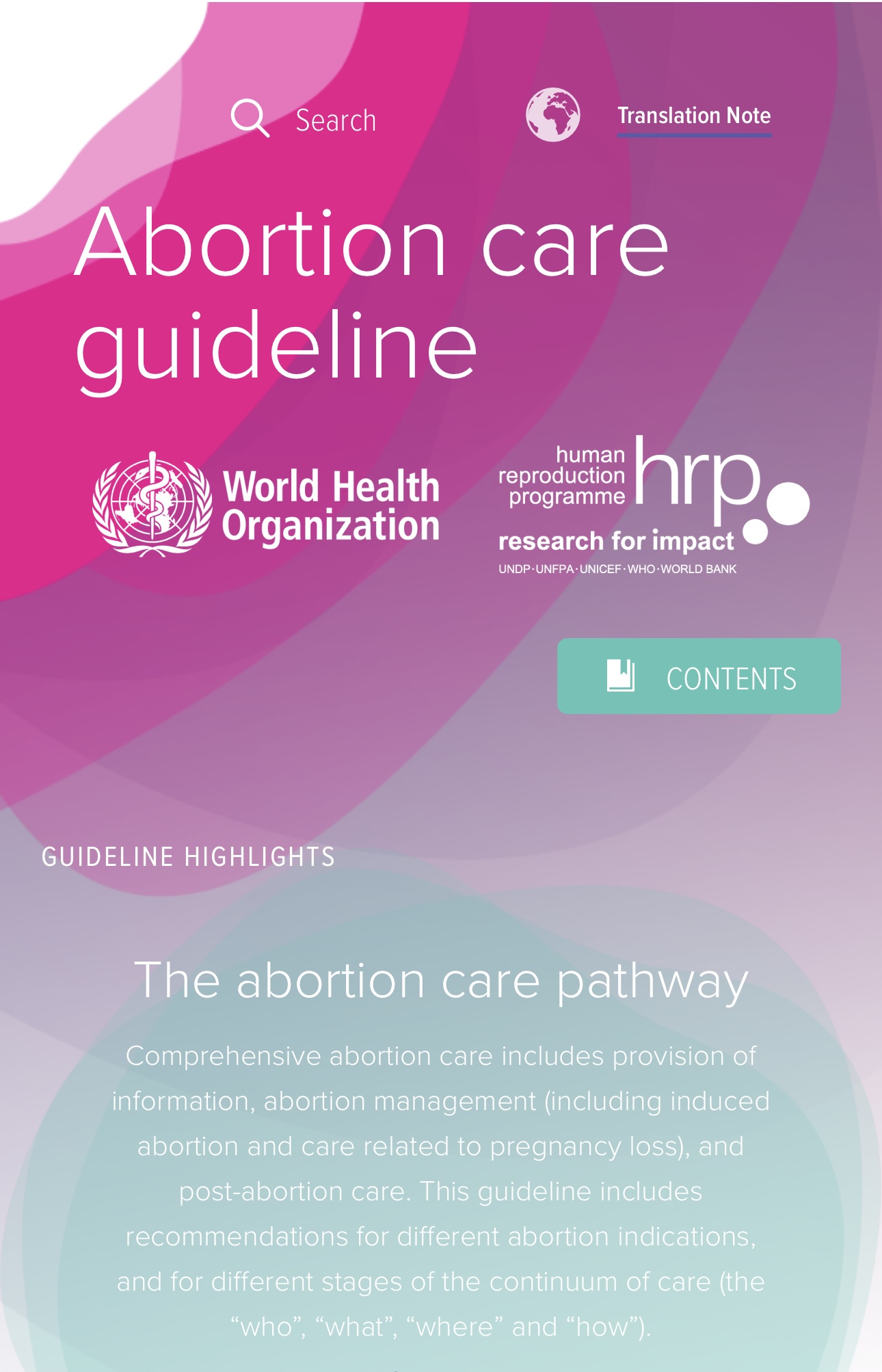Big Abortion has long prepared for the day with less abortion providers, more healthcare regulation, fewer abortion facilities, and increased state restrictions. The abortion lobby has swapped abortion chemicals for abortion surgeries of the past. Many throughout the world have worked to create ways to get deadly chemicals into the hands of women – including women with advanced gestations – quickly and without medical oversight. Abortion is now readily available to any woman no matter where she resides in the world or what her local law dictates.
Who is having late chemical abortions?
Women choosing chemicals to end their pregnancies are often sold the idea of a “natural, private and safer than a surgical procedure.” Big Abortion has falsely advertised a process that has less complications than Tylenol or Advil, is more natural than surgery, and can take place in the comfort and privacy of your own home.
However, these drugs have a significantly higher complication rate than surgical abortion, there is nothing natural about the chemicals that were developed to end a human life, and while a home abortion may seem tempting, it is very dangerous and frightening for the woman undergoing the process without emotional support or medical supervision.
Tweet This: Chemical abortion drugs have a significantly higher complication rate than surgical abortion.
The American Association of Pro-life Obstetricians and Gynecologists (AAPLOG) reports consequences of hemorrhage, retained tissue and subsequent emergency visits, with complications increasing exponentially for increasing gestational age.
[Click here to subscribe to Pregnancy Help News!]
Here is a client account that came in through the Abortion Pill Rescue® Network (APRN):
Tasha* is a small-town Midwest girl who had always dreamed of having a family. It rolled through her mind that the timing of the pregnancy could not be worse, and she had no money, no way to be a mom. How would she fix this? As she tried to make a decision for the pregnancy, the days became weeks, and the weeks became months. Already well into her second trimester, there still was no easy choice. The irony was that she truly wanted her baby and ached to hold the child that moved in her abdomen.
The following week, her boyfriend scraped the money together to fly her to Nevada.
She arrived alone for the first visit at the abortion facility. After paying a larger fee for a late chemical abortion, she swallowed the first abortion pill. Laminaria was inserted into her cervix to start the dilation process and her abortion was quickly underway. During the ultrasound which confirmed she was 23 weeks pregnant, they told her an injection into her abdomen was needed. This was a disappointment to Tasha who had chosen chemical abortion to avoid needles. They did not explain much, but she reluctantly agreed, assuming they knew what was best. Tasha had no idea they were injecting digoxin into her baby’s heart. Soon she was back in her hotel room alone and waiting. The baby who had been active, moving frequently even minutes ago, now lay quietly within her “like a ball.”
She began to grieve the little one who would never see daylight on this earth as the reality of what she had done hit her. Within a few hours she began to have some pain and bleeding. The medications were starting to break down the pregnancy while at the same time strong regret pierced her heart. She did a quick search on her phone for help and found the APR Hotline. When she called the number on the website, the nurse gently explained what the purpose was of each of the drugs that had been used to start her abortion. Because of her symptoms and possible imminent delivery, Tasha agreed to go to a nearby emergency department where a doctor confirmed her baby had passed away. She labored alone to give birth to her lifeless child. The following day she returned to her small town with empty arms and a grief-filled heart.
What is the FDA approval for mifepristone and misoprostol?
Although induced abortion never promotes health – only the loss of human life - the U.S. Food and Drug Administration (FDA) regulates abortion drugs. The abortion drug mifepristone used in the U.S. is approved by the FDA just through the first 10 weeks (70 days) of pregnancy and misoprostol, the second set of drugs in the abortion process, has not been approved for abortion. Yet abortion providers continue to prescribe these life-ending and life-altering drugs off-label in creative ways to end the lives of thousands of children each year.
In the last five years, the NHS Imperial College Healthcare, a London, England-based trust of the UK’s National Health Services (NHS), has led the way for other countries to use abortion medication to end pregnancies after the first trimester and published official protocol in October 2019. Abortionists throughout the world have emulated their techniques to use abortion pills for advanced pregnancies sadly with the same dire consequences.
Why is digoxin or potassium chloride used in later abortions?
A large European study documented that more than half of the babies survived delivery in post-viability induced abortions. If a baby is born alive, the abortionist may “complete the abortion” by performing active or passive infanticide. Many abortionists perform feticide via intracardiac or intra-amniotic injections to avoid the possibility of a baby being born alive. But this practice involves additional health risks for the mother if these potent cardiotoxic medications enter her bloodstream.
Why do women choose chemical abortion over surgery for termination of a pregnancy?
One might assume that late abortions are performed to save the life of the mother or in cases of severe fetal abnormalities. Yet the Charlotte Lozier Institute reports “most late abortions are performed for the very same elective reasons that earlier abortions are obtained, and are often influenced by partner abandonment, coercion, and indecision.”
A recent study states that women are more likely to choose medication abortion in second trimester if they:
* Prefer more awareness of the termination process
* Prefer an intact baby
* Want to avoid surgery
The Abortion Pill Rescue Network has seen a drastic rise in the number of callers who are over 10 weeks gestation. In the last year, there has been a 35% increase in callers who were beyond 10 weeks gestation which is outside the FDA approval of mifepristone and has much greater risks.
What do health organizations recommend regarding abortion?
Under the guise of medical care, some health organizations are promoting chemical abortion even into advanced stages. Despite dreadful health consequences, The American College of Obstetricians and Gynecologists (ACOG) states that in second trimester abortions, medications used may be placed in the vagina, taken by mouth, injected into the uterus, or given through an intravenous (IV) line.
The World Health Organization now has suggested protocol for chemical abortion through 28 weeks.

How does aborting later in pregnancy affect the complication rate?
A recent U.K. Government review confirmed abortion complication rates for chemical abortions at 20 weeks and over are 160 times higher than complication rates for medical abortions at 2-9 weeks gestation. The most common abortion complications reported in the relevant data for 2021 were hemorrhage (65.8%), sepsis (11.4%) and cervical tear (11.1%). In 2021 more than 10,000 women received hospital treatment following the use of chemical abortion pills in England between April 2020 and September 2021.
Shockingly, AAPLOG reports a woman's risk of death from abortion increases by 38 percent for each additional week beyond eight weeks.
Chemical abortions have proven dangerous for the women who trust medical providers to know what is safe and to honestly share with them any potential risks. Based on data collected from 85 Freedom of Information requests to NHS trusts across England, the data suggests that more than 1 in 17 women who had a medical abortion over the 18-month period needed hospital treatment.
Rarely are women given accurate information that there is an increase in immediate complications in chemical abortion in comparison to surgical abortion. A Finnish study of 18,000 women found an 8% rate of surgery for medication abortion failures in the first trimester, and almost 40% surgery rate in the second trimester.
Tweet This: Rarely are women given accurate info that there is an increase in immediate complications in chemical abortion compared to surgical abortion
Liverpool’s NHS Foundation Trust lists these as recognized risks of late medical termination of pregnancy:
* Blood transfusion
* Excessive bleeding (hemorrhage)
* Retained pregnancy tissue requiring further treatment
* Irregular or continuous bleeding and/or abdominal pain
* Infection
* Damage during the procedure, including uterine rupture
* Emotional / psychological distress
* Failure to end the pregnancy
* Death
Why are women choosing DIY abortion?
Abortions are advertised to women with phrases such as:
* “Pain-free” abortion
* “100% working”
* “Completely safe, effective, pain-free and infection-free”
* “Harmless and successful”
* “Early-stage pregnancy execution”
Attempting to appeal to the needs of women who are desperately desiring a way to relieve tremendous pressures and appease powerful influencers, the ads also prey on the fears of women. Many are fearful or surgery, needles, and pain. Ironically, many who choose chemical abortion require medical treatment that involves surgery, needles, and pain.
The UK Government Review also revealed, not surprisingly, that complication rates for DIY abortions are largely underreported and presumed to have an even higher incidence of complications. Since England introduced ‘DIY’ abortions nearly four years ago, the abortion numbers have continued to increase each year. Over the first six months of 2022, there were almost 18,000 more abortions in the U.K. compared with the same time period in 2021.
Below is another client account from the APRN:
Charlotte* became pregnant with her third child after a painful divorce. As she struggled to care for her children, pay rent, and work two jobs, the pressures weighed too heavy. Late one night after her children were in bed, she searched for ways to obtain abortion drugs. She found a website that sold them at a discount. The drugs arrived within days but did not have labels or instructions. She found another website for help in knowing how to administer her own abortion. On a weekend night after a few glasses of wine, she began the process alone in the bathroom. She hoped no one would have to know about the abortion and had been thankful for the discreet package that arrived on her doorstep. Yet as the pain and bleeding began so did the overwhelming fear and sadness. No one knew what drugs she’d taken or where she was. What if the bleeding becomes too much? Who would she call for help? What if she still wants this baby?
Sobbing uncontrollably, she found the APR hotline number on the same laptop where she had ordered the abortion. She shared that she had only taken the first pill and wondered if the abortion could still be stopped. The hotline nurse connected her with a local pregnancy help medical clinic which provided an ultrasound that revealed a beating heart and started the reversal process. Not only did this clinic tend to her medical needs, but they also provided something she’d lost long ago – hope for the future. Since the divorce and subsequent failed relationships, she’d been struggling emotionally, spiritually, and financially. She’d felt like most days were dark and found it difficult to see any light. But here in this place, she felt encouraged that these were not empty promises. She had found the support she needed today and for months to come. The clinic helped her save her baby from abortion, but they also provided her with resources and kindness she had no idea were readily available to her without cost or obligation.
*Pseudonyms
Editor's note: Heartbeat International manages the Abortion Pill Rescue® Network (APRN) and Pregnancy Help News.







